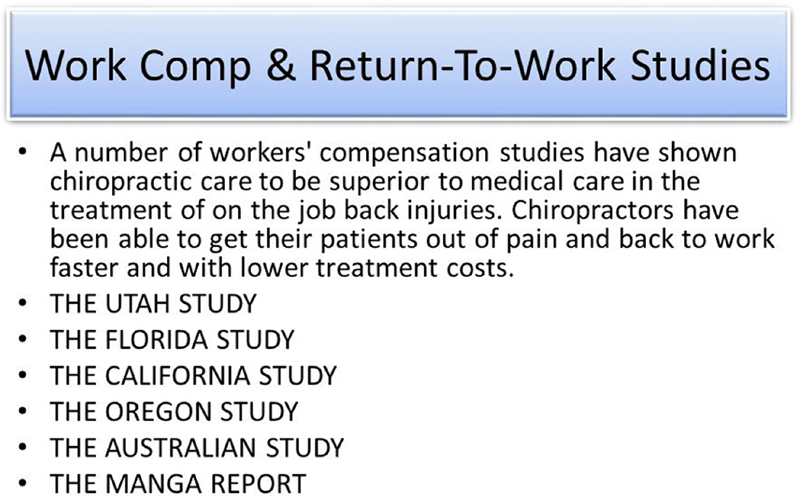Who Will Have Sustainable Employment After a Back Injury?
Who Will Have Sustainable Employment After a Back Injury? The Development of a Clinical Prediction Model in a Cohort of Injured Workers
SOURCE: J Occup Rehabil. 2017 (Sep); 27 (3): 445–455
Heather M. Shearer, Pierre Cote, Eleanor Boyle, Jill A. Hayden, John Frank, William G. Johnson
UOIT-CMCC Center for the Study of Disability Prevention and Rehabilitation,
University of Ontario Institute of Technology,
2000 Simcoe St. North,
Oshawa, ON, L1H 7K4, Canada.
Our objective was to develop a clinical prediction model to identify workers with sustainable employment following an episode of work-related low back pain (LBP).
Methods We used data from a cohort study of injured workers with incident LBP claims in the USA to predict employment patterns 1 and 6 months following a workers’ compensation claim. We developed three sequential models to determine the contribution of three domains of variables:
(1) basic demographic/clinical variables;
(2) health-related variables; and
(3) work-related factors.
Multivariable logistic regression was used to develop the predictive models. We constructed receiver operator curves and used the c-index to measure predictive accuracy.
Results Seventy-nine percent and 77 % of workers had sustainable employment at 1 and 6 months, respectively. Sustainable employment at 1 month was predicted by initial back pain intensity, mental health-related quality of life, claim litigation and employer type (c-index = 0.77).
There are more articles like this @ our:
The RETURN TO WORK Section and the:


